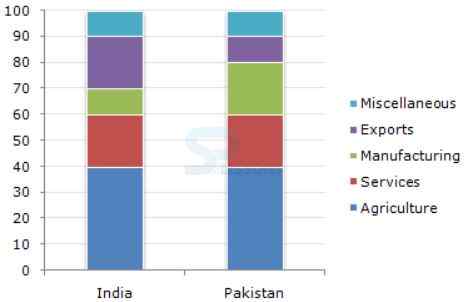 Introduction
Introduction
What is Quantitative Aptitude test?
Quantitative Aptitude is one of the prominent competitive aptitude subjects which evaluates numerical ability and problem solving skills of candidates. This test forms the major part of a number of important entrance and recruitment exams for different fields. The Quantitative Aptitude section primarily has questions related to the Simplification, Numbering Series, and Compound Interest, etc.
A candidate with quantitative aptitude knowledge will be in a better position to analyse and make sense of the given data. Quantitative Aptitude knowledge is an important measure for a prospective business executive's abilities.
The article IBPS Clerk Numerical Ability Quiz 5 provides Quantitative Aptitude questions with answers useful to the candidates preparing for Competitive exams, Entrance exams, Interviews etc.
 Quiz
Quiz
Directions(1-5): Study the following information carefully and answer the questions given below.
The population of village A and Village B is 2400 and 2100 respectively. The percentage of Labours in village A is 33.33% and that of village B is 42.85%. The ratio of male and female labours in village A is 3:2 and that in village B is 5:4. The male labours and female labours of village A work for 9 hours in a day and the male labours and female labours of village B work for 7 hours in a day.
1. The total number of male labours from village A is what percent of total number of female labours in village B?
- A. 130%
B. 120%
C. 125%
D. 135%
E. 150%
- A. 36% more
B. 40% more
C. 39% less
D. 35% less
E. None of these
- A. 8500
B. 8250
C. 7820
D. 8900
E. None of these
- A. 1600
B. 2800
C. 3200
D. 2400
E. None of these
- A. 260
B. 300
C. 280
D. 320
E. None of these
Directions(1–2): Following question contains two equations as I and II. You have to solve both equations and determine the relationship between them and give answer as.
1. I) 14x² – 5√15 x – 90 = 0
II) 6y² + √21 y – 21 = 0
- A. x > y
B. x ≥ y
C. x = y or relationship cannot be determined
D. x < y
E. x ≤ y
- A. x > y
B. x ≥ y
C. x = y or relationship cannot be determined
D. x < y
E. x ≤ y
- A. Quantity II> Quantity I
B. Quantity II < Quantity I
C. Quantity I ≥ Quantity II
D. Quantity I ≤ Quantity II
E. Quantity I = Quantity II or No relation
- A. 27
B. 52
C. 34
D. 68
E. 46
- A. 124
B. 138
C. 142
D. 120
E. 136
Direction[1-5]: The following bar chart shows the composition of the GDP two countries (India and Pakistan).
Composition of GDP of Two Countries
1. If the total GDP of Pakistan is Rs. 10,000 crore, then a GDP accounted for by Manufacturing is ?- A. Rs.200 crore
B. Rs.600 crore
C. Rs.2,000 crore
D. Rs.6,000 crore
E. None of these
- A. [latex]{(\frac {6}{33})}^{th}[/latex]
B. [latex]{(\frac {1}{5})}^{th}[/latex]
C. [latex]{(\frac {2}{3})}^{rd}[/latex]
D. [latex]{(\frac {1}{8})}^{th}[/latex]
E. None of these
- A. Rs.18,500 crore
B. Rs.18,000 crore
C. Rs.21,000 crore
D. Rs.15,000 crore
E. None of these
- A. India
B. Pakistan
C. Both spend equal amounts
D. Cannot be determined
E. None of these
- A. 100%
B. 200%
C. 133.33%
D. 120.22%
E. None of these






